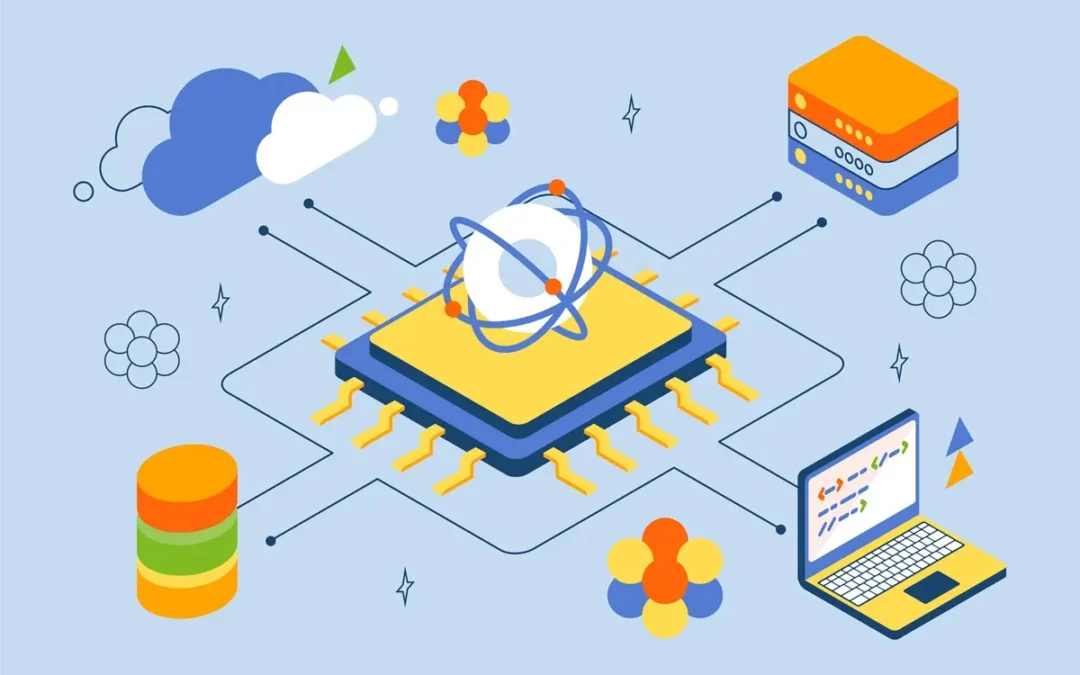Introduction:
The larger concept of microservices architecture has brought about a change in the design and production of scalable applications. This article digs deep into microservices, demystifying its significance, extolling their multilayered benefits, and walking through the processes of their practical adoption. By the time you finish reading this article, you will appreciate why microservices architecture is a critical success vector in future-building software, ensuring that your applications are deliberately agile, robust, and adaptable in the ever-lively digital scenario.
Microservices: Core Concepts
In a broad sense of understanding, microservices architecture is by definition a design in which an application is conceived as one set of small-independent services that can communicate with one another, ordinarily via HTTP/REST or messaging queues, through well-defined APIs. Microservices architecture is different from monolithic architecture as everything in a monolith hangs tightly in a codebase, and gets deployed as one unit. It disintegrates the application into a set of loosely coupled, modular services and focuses each service on a specific business feature, such as user authentication, payment processing, or inventory management.
The early roots of microservices can be traced back to the early 2010s, when Netflix, Amazon, and Uber tied their famous names with scaling up their systems in a very rapid way. Martin Fowler, a highly popular software architect, said: “Microservices is a term that refers to an approach to developing an application as a suite of small services-all about running in its own process and communicating with lightweight mechanisms.” It has allowed teams to independently develop, deploy, and scale different services, hence promoting a decentralized development model.
Some of these microservice characteristics include:
- Independence: it is capable of being developed in a different programming language, database, or framework as per the needs of the communication protocol
- Decentralized data management: similar to the idea of a monolithic system in that it uses a single database, microservices generally have their own databases (also known as “polyglot persistence”). Thus, they avert bottlenecks and allow domain-specific data models.
- Communication (API-Driven): The services are really interacting with one another using these APIs-RESTful endpoints, gRPC for performance-critical cases, as well as asynchronous messaging systems as of Kafka or RabbitMQ.
- Automated deployment: Microservices are great in containerized environments like Docker, government-oriented tools like Kubernetes, which can further automate deployment handling growth, load balancing, and fault tolerance.
The Benefits of Microservices for Scalable Applications:
Adoption of microservices is not merely a fashion; it is a well-planned decision that can offer demonstrable benefits in the case of applications expecting growth or complexity.
- Scalability is the first brick in this wall of benefits. In a monolithic architecture, scaling simply means copying the entire application in cases where one of its components needs to be loaded. The fine-grained scaling of microservices means that if your search service is taking a hit during prime time, you can bring a bunch of other instances of that just service without affecting the others. This is where cloud-native applications really require elasticity, since on-demand allocated resources reduce costs and enhance performance.
- Equally intriguing is resilience and fault isolation. In the case of a monolith, a hitch in one module will terminate the whole system. Microservice architecture isolates the failure. When the payment service goes down, browsing or the user profile application service continues to function. Circuit breakers (e.g., Hystrix) and retries provide further robustness to the system, ensuring every application component remains reliable when stressed.
- Development speed reaches the highest levels with microservices. Teams can be their own services, allowing much-needed parallel development and quickly releasing functions. It fits agile and DevOps environments as processes deploy individually their supported functions through CI/CD pipelines. Example: Netflix deploys hundreds of times a day, which is impossible with monolithic environments.
- Flexibility in technology; teams do not have to stick to a particular tech stack; a service might use Node.js for prototyping; on the other hand, heavier computations might be implemented by Java. Such a strong polyglot environment gives one future-proofing for tech choices, allowing easier incorporation of new technologies such as machine learning or blockchain without the need to overhaul the entire application.
- Microservices are also an enabler of all this business innovation; a new feature could be created, packaged as a service as a separate entity, tested independently, and deployed with zero kernel time. Modularity such as this also simplifies merger or acquisition work since services from the acquired company can be blended much seamlessly.
A Guide to Using Microservices:
Step 1: Assess and Plan:
Doing a full assessment of your current monolithic application. Identify bounded contexts using DDD-pack together functionalities changing with one another, e.g. user management, order fulfillment. Avoid fine granularity; services should be just right in size to avoid communication overhead. Choose between the “strangler pattern” (gradual replacement of parts of the monolith with services) or “big bang” (full rewrite, risky but cleaner).
Step 2: Design the Services and APIs:
Design each service around business capabilities while adhering to a single responsibility. API gateways (e.g., Kong or AWS API Gateway) can be deployed here to manage authentication, rate limiting, and routing of external access.
Asynchronous communication is preferred to decouple inter-service communication with contracts being defined with either OpenAPI for REST or gRPC using Protocol Buffers.
Data management is a very important orchestration: Use event sourcing or CQRS (Command Query Responsibility Segregation) when it is very complex. Then use database/s per service SQL for transactional stuff and NoSQL for scalability to avoid tight coupling.
Step 3: Build and Containerize:
The procedure is to establish services in an isolated context by using micro-frameworks for application development, boot for Java, Flask for Python, and Express for Node. This containerizes the entire application with Docker, thereby ensuring that it is consistent across environments. Automation testing: test cases on a unit level for each of the services and integration test cases on the whole run of APIs in the end-to-end test cases on the system-wide testing.
Step 4: Deployment and Orchestration:
CI/CD can be ensured by the use of tools like Jenkins or GitHub Actions to give a seamless experience in deployment, hence Security; Control Entry in communications using Mutual TLS for API using OAuth Communications; Secrets Management via Vault; Monitoring Distributed Tracing (Jaeger or Zipkin) for draining latency bugs in a microservices mesh.
Step 5: Monitoring and evolving process:
Once deployed, focus on observability. Measure, monitor, and track data to gain insights. Create auto-scaling policies based either on CPU/memory usage or using individual-specific metrics such as request rates.
For future-proofing, have some serverless services (for example, AWS Lambda), which one would need serverless capabilities for, to reduce management overhead. Regularly refactor services as business needs change, and invest in API versioning to make any changes without breaking clients.
Challenges to be mindful of: Network latency from inter-service calls could be resolved with service meshes. To ensure data consistency in distributed systems, sagas or two-phase commits are required. Cultural shifts are also necessary-teams should adopt accountability and collaboration.
Conclusion:
Microservices maximize the architecture for developing scalable, resilient applications. The architecture supports software design with modularity and scaling features, guiding developers to implement them into the actual software under consideration, assuring its survival against competitors in future business contexts. Some challenges arise, but the benefits-an expedited pace of innovation, efficiency of resource utilization, and adaptability simply too good to be ignored. As the environment for software design continues to evolve, the use of the microservices architecture will enhance the prospects of survival for a targeted project, changing complexity into a competitive advantage.
Transform Your Software Development with Our Expertise
Unlock the full potential of microservices architecture with our cutting-edge software development services. At DevRaulic, we design and implement scalable, maintainable, and efficient microservices solutions that drive business growth and innovation. Partner with us to future-proof your software development and stay ahead in the competitive tech landscape.
Got time? Explore more!
Case Study: How We Helped a Mid-Sized Company Optimize Their Mobile App’s Performance
Three people with VR headsets analyzing a digital dashboard of business data, highlighting data-driven decision making.
Data-Driven Decision Making: Your Competitive Edge
Three people with VR headsets analyzing a digital dashboard of business data, highlighting data-driven decision making.
Leveraging Machine Learning to Enhance Customer Experience
understand the critical importance of Responsible and Ethical AI in building customer trust




